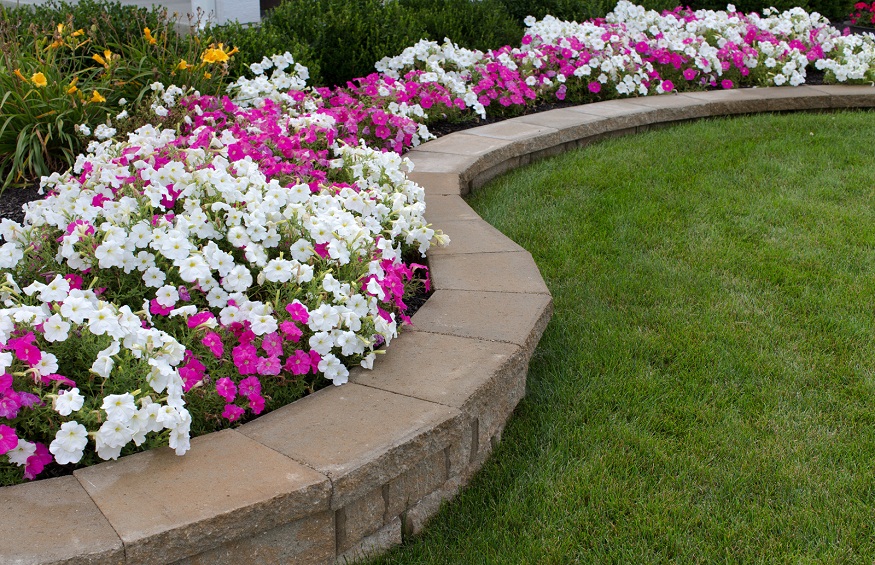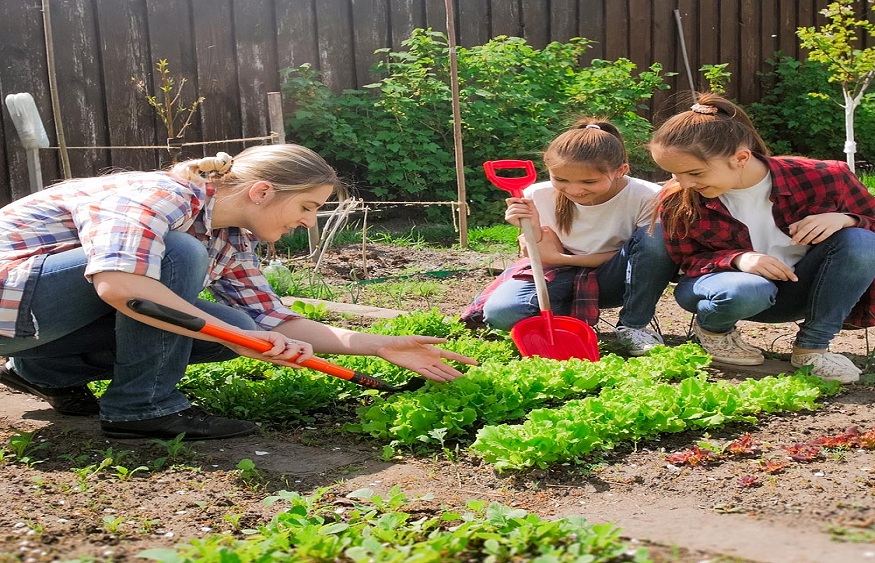Would you like to have a lush garden all year round? Well, it requires careful attention and making plans. By breaking down your landscaping responsibilities into seasonal checklists, you can be certain that your outdoor space thrives in every season. Whether it’s far lawn upkeep, tree removal, garden care, or landscape design, we can help you maintain the beauty of your landscape all year long.
Spring Landscape Maintenance
As the days develop longer and the temperatures increase upward, spring brings a burst of increase and interest to your landscape. It’s crucial to kickstart your seasonal protection to make sure that your plants, lawns, and hardscapes flourish during the coming months.
Spring Lawn Care
A beautiful outdoor space begins with a beautiful lawn. You should do the following for your lawn care:
- Apply a spring fertiliser in your garden once the snow has melted for healthy growth.
- Repair any useless patches via overseeding or reseeding as wished.
- Treat crabgrass with an early-season weed killer around the time while forsythia blooms in your place.
- Dethatch and aerate susceptible lawns to enhance soil aeration and drainage.
Spring Garden Maintenance
Your spring garden maintenance should include the following:
- Fertilisation – Natural fertiliser enhances soil’s shape and fertility, providing essential nutrients for plant growth.
- Planting – Plant cool-season vegetation and greens, taking gain of the milder climate and longer days.
- Pruning – Trim roses for healthy growth and blossoms.
- Dividing perennials – Divide overcrowded perennials. As a result, it keeps nutrients and helps plants grow well.
Summer Landscape Maintenance
As the warmth of summer spreads across your landscape, it’s time to focus on protection responsibilities to help your outdoor living space thrive. From garden care to garden renovation, here are the critical steps to maintain your outdoor space and make it look nice at some stage in the summer months.
Summer Lawn Care
- You should mow your lawn regularly.
- You need to leave grass clippings to rot and return vitamins to the soil.
- Water your garden deeply and periodically.
- Change your mowing sample frequently to avoid soil compaction and encourage even growth.
Summer Trees, Shrubs, and Groundcover Maintenance
- Weed around trees and shrubs. By doing this, there will be less competition for water and nutrients. Keep mulch around them. It keeps the soil moist and prevents weed growth.
- Check flowers for signs of pests and diseases.
- Water newly planted shrubs and trees often. Make sure the soil stays wet.
- Remove weak plants. This way, they bloom continuously and keep your landscape’s look.
Summer Garden Care
- Mulch lawn beds. It will save soil moisture, stop weeds, and change soil temperature on hot summer days.
- Harvest plant life and herbs in the morning. They’re at their freshest and most aromatic. Pick veggies when they’re ripe for the best flavour and vitamins. Trim fruit-bearing shrubs and trees. You will improve airflow and light penetration.
- Check flowers carefully for insects and diseases. Be sure to take the right measures to keep them from being infested.
Fall Landscape Maintenance
As summer fades into autumn, it’s time to prepare your yard for the cooler months. During the fall season, here’s what you should do to keep your outdoor space healthy and colourful.
Fall Lawn Care
- Overseed bare patches in your garden to sell thick, lush growth and prevent weeds from taking preserves.
- Apply a fall fertiliser to nourish your grass and assist it withstand the stresses of the climate.
- Rake fallen leaves regularly to save them from smothering your garden and inhibiting growth.
Fall Trees, Shrubs, and Groundcover Maintenance
- Spread compost around the roots of trees and shrubs to protect them from frost.
- Plant new bushes and shrubs. The cool weather and extra rain will help their roots grow strong.
- Remove any fallen fruit or leaves from around trees. In this way, you will reduce the risk of pests and diseases.
Fall Garden Maintenance
- Cut herbaceous perennials to the ground. Remove spent foliage. In the spring, this will encourage healthy regrowth.
- Dig up and save gentle bulbs. These include dahlias and cannas. Put them in a groovy, dry place to defend them from frost.
- Divide overcrowded perennials to rejuvenate them and prevent them from becoming too dense.
Winter Landscape Maintenance
It’s essential to take steps to protect your landscape from the cold and keep it healthy until spring. Here’s what you want to do at some stage in the winter months.
Winter Lawn Care
- If your garden remains untouched throughout the winter months, lightly fertilise it in the late winter to promote healthy growth.
- Avoid walking on foot for your lawn if it’s far dormant or frozen to save yourself damage to the grass blades.
- You can use sand to soften ice on pathways without damaging your garden.
Winter Trees, Shrubs, and Groundcover Maintenance
- Water newly planted evergreens for the duration of dry spells to prevent dehydration and root harm.
- Plant naked-root roses as soon as viable, taking gain of the dormant season to establish sturdy root structures.
- Prune fruit timber in past-due wintry weather and practice dormant oil to shield them from pests and illnesses.
Winter Garden Maintenance
- Check saved bulbs for symptoms of rot or decay, discarding any that appear tender or mouldy.
- Order seeds for spring planting. Be sure you have everything you need for the coming growing season.
- Fertilise plants in slightly icy regions with fast-acting fertiliser. It promotes healthy growth in the colder months.
Winter Hardscape Maintenance
- Repair any damaged factors, such as arbours or fences, to prevent similar harm from iciness weather.
- Organise gear on your lawn shed or garage, making sure everything is easily handy whilst needed.
- Inspect irrigation structures for cracks or leaks and restore them earlier than the spring thaw to prevent water wastage.
Tips from Gardening Experts
Expert landscapers and gardeners provide valuable tips. They recommend to help you maintain your landscape all year. Here are a few professional suggestions to decorate the fitness and splendour of the area of your door:
- Plan. Make a list of tasks for each month at the start of the year. Planning lets you live organised and tackle tasks successfully.
- Invest in good tools. Quality gardening tools could greatly ease and improve your landscaping maintenance. Invest in durable tools which are suitable for the responsibilities you want to accomplish.
- Know your plants. Understand what the plants in your garden need – their favourite growing conditions, pruning needs, and care schedule. Tailor your care practices to fulfil the particular wishes of every plant species.
- Inspect your garden often. Look for signs of pests, diseases, or other troubles. Early detection lets you deal with issues promptly.
- Mulch wisely. This practice minimises moisture loss, reduces weed growth, and improves soil health. Choose organic mulches. Use compost, wood chips, or straw. Spread them thickly around plants. But keep them off stems and trunks.
- Water your landscape deeply and rarely. Let moisture penetrate the soil and reach plant roots. Water should be used early in the morning to lessen evaporation and minimise the danger of fungal sicknesses.
- Practise sustainable gardening. Use practices like composting, saving water, and native plant landscaping. Sustainable strategies encourage environmental responsibility. They also help your landscape last for a long time.
- Stay informed. Stay up to date on local climate, seasonal gardening, and good landscape practices. Subscribe to gardening magazines. Attend workshops or join online forums. These will extend your expertise and skills.
- Embrace continuous learning. Gardening is a lifelong studying adventure, and there may always be something new to find out. Be open to trying new techniques. Experiment with exceptional plants. Learn from each success and disaster in your garden.
Conclusion
We provided you with a guide that covers all necessary landscaping maintenance tasks. These practices help you have a beautiful outdoor area. Keep your garden healthy and vibrant. Make it look its best. Do this by following the necessary steps. Incorporate those expert tips into your garden care routine. They may make your outdoor space colourful and thriving. It will bring joy and beauty at some point in the year.





